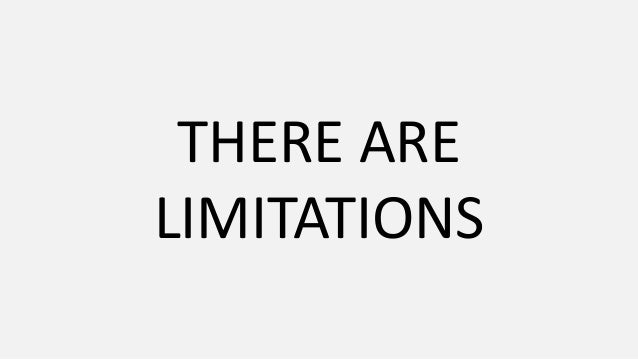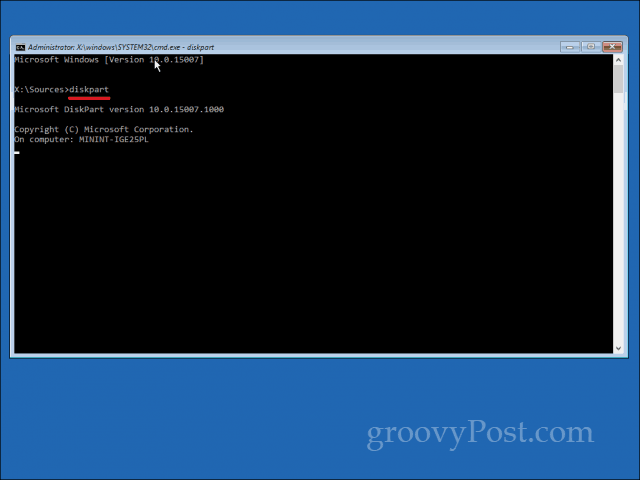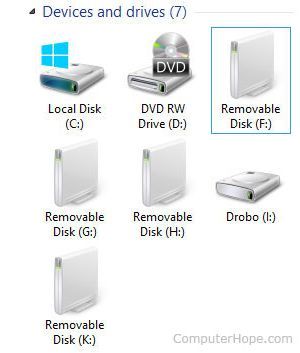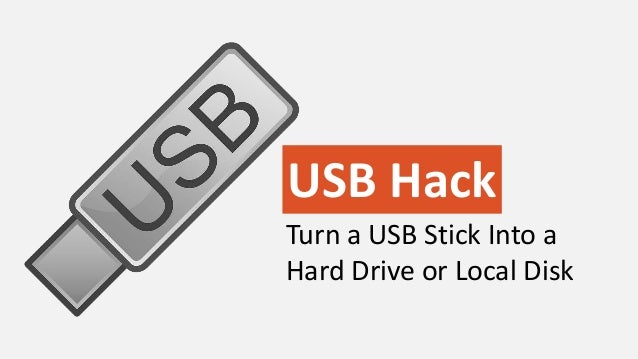USB Tutorial: Turn a USB stick into a Hard Drive or Local Disk
As a NOTE: Rmprepusb create a hidden system partition on the usb stick, it's very small, it's not visible with Windows Disk Management but if you use the command line 'diskpart' you'll see it by using the command 'list partition' on that selected disk. This small partition is the one that makes possible booting from Bios as it treats the removable usb as a regular Hard disk. The only way you can create a partition on a USB drive is by converting the USB drive to a local disk. Since, recently most of the storage drives provide storage space of 1TB and above, converting USB to local disk will allow you to create partitions. A better way to organize your vast amounts of data. Ventoy is an open source tool to create bootable USB drive for ISO/WIM/IMG/VHD (x)/EFI files. With ventoy, you don't need to format the disk over and over, you just need to copy the ISO/WIM/IMG/VHD (x)/EFI files to the USB drive and boot them directly. You can copy many files at a time and ventoy will give you a boot menu to select them.
This is a very valuable tutorial, especially if you are looking to partition a USB stick. Another application for turning a removable drive into a local disk, is that now many software programs can be loaded directly to a USB drive. The first program which comes to mind is iTunes. I know you need My Documents and a Local Disk to install it, so after this tutorial, I’ll try installing iTunes and share the results.
The process of turning a USB stick into a hard drive is fairly easy. However, there are limitations. For example, this works best with Windows XP operating systems. You also need to update the drivers for the device for any computer you are going to use. Typically, this isn’t a big deal as you can easily do this for your work and home computers. However, this isn’t a great solution if you are trying to create a partitions USB stick for distribution to many possible users [say trade show give-away].
Couple of items you’ll need:
- USB_LocalDisk.zip files [download here]
- Windows XP
- USB stick
What we will do, is connected the USB stick, find the driver code, update the driver code and re-connect the device. Simple.
Here are the details:
- From a running Windows XP system, Insert your USB flash drive
- Download USB_LocalDisk.zip and extract. A USB_localDisk folder is created.
- From the USB_LocalDisk folder, right click cfadisk.inf and open the file with Notepad or text editor.
- Navigate to line 26 of the cfadisk.inf file. We are going to be editing the section labeled “device_instance_id_goes_here“. Good idea to keep this file open because we will be using it in about 40 seconds.
- From your Windows Desktop, click Start > Run and type devmgmt.msc and click OK
- Under Disk drives, locate your USB stick and right click, select Properties.
Click the Details tab and select the item listed. Use the Ctrl C function to copy this driver for your USB stick.
Next, go back to your open file cfadisk.inf and lets insert the drive code you just copied and update the file. Find the text which says: “device_instance_id_goes_here” should be around line 26. Paste the drive code you have by Ctrl V.
Now click Save. We’ve just created an updated driver for the device so it will read as a Local Disk. But now we need to update the driver itself.
Click Start > Run > type devmgmt.msc and locate your USB stick again. Right click the device and select “Update Driver”
Inside the Wizard we need to follow specific instructions to manually update the driver to change your USB stick to a hard drive or Local Disk. It’s easy, just follow along…
Select: Install from a list or specific location > Next
Select: Don’t Search. I will choose the driver to install > Next
Select: Have Disk…
Navigate to the location of the “cfadisk.inf” file > click Open
Select: Next in the Windows wizard and that’s it! You may need to reconnect your device to the OS.
Two additional tips.
- Save the “cfadisk.inf” on your USB stick so you may use it at different locations when updating your home or work computer.
- To partition your USB stick using the Windows utilities you can find that function by:
Start > Control Panel > Administrative Tools > Computer Management > Disk Management under the Storage folder.
Helpful Reference: Lance Hoff.
Tags: USB Hacks, usb hard drive, usb local disk, USB Tutorials
Rich Gates

Summary :
Are you troubled by the issue USB drive can not be opened in Windows 7/8/10? Here, you come to the right place. This article will show you how to solve the problem and show you how to recover data from the USB drive with MiniTool Power Data Recovery.
Quick Navigation :
Can't Open USB Flash Drive in Windows 7/8/10
Today, I am going to talk about a hot issue – USB drive cannot be opened in Windows 7/8/10.
Now, more and more users like using USB flash drive to store data or transfer data. However, according to users’ feedback, users have encountered some different problems like USB drive not showing files and folders, USB flash drive not recognized.

Here, we are going to discuss another hot issue about USB drive detected but not accessible and introduce a reliable file recovery software to recover lost files when we cannot open files on USB flash drive. A true example is shown here.
Q: Can't Open USB Flash Drive in Windows 10
I upgraded from Windows 7 to 10 with no problems except I can't open my E drive which is my USB port. I inserted a USB flash drive and the computer recognizes it. When I go to Connected Devices in Settings it is there. I can't figure out how to open it. I have Autoplay on Open Folder to View Files. Anyone know how to open the E drive so I can get to the content on my flash drive? I'm not a computer expert as you can tell.answers.microsoft.com.
Search on google, then we will find a large number of users are talking about the question of USB drive detected but cannot be opened.
As we know, if we cannot open USB flash drive in Windows 7/8/10, we cannot access our files on USB drive. Therefore, before fixing the issue - cannot access files on USB flash drive in Windows 7/8/10, you are strongly suggested to recover data from USB drive by using the best file recovery software – MiniTool Power Data Recovery.
STEP 1. Recover Data from USB Drive that Cannot Be Opened
MiniTool Power Data Recovery, a read-only and professional data recovery software developed by Minitool Solution Ltd., can help you effectively recover lost data from USB drive without damaging the original data.
And, with this tool, you don’t need to worry about your poor knowledge about data recovery, for it offers wizard-like interfaces as well as simple operations which can help you complete the task of data loss recovery without any difficulty.
What’s more, this professional data recovery tool can recover documents, videos, phots, and other data, and supports various operating systems including Windows 7, Windows 8 and Windows10.
You can download MiniTool Power Data Recovery, and try it out! I bet you would like this professional, simple and read-only data recovery software.
Now, let’s see how to recover files from USB drive that cannot be opened in Windows 10.
1. Select the target volume/device to Scan.
Launch MiniTool Power Data Recovery to get its main interface as follows.
From the main interface, you can see 4 different data recovery modules, and each of them focuses on different data loss scenarios.
Here, since you are recovering lost data from USB drive, you can select the Removable Disk Drive. This recovery module is designed to recover lost photos, mp3/mp4 files, and videos from flash drives and memory sticks.
Usb Local Disk
2. Full scan USB drive.
Select the USB drive and then click Scan button. While scanning, you are able to preview and save files. However, to get the best recovery result, you had better wait until the full scan finishes.
3. Save needed files.

Preview files, check needed files, click Save button, select a directory, and click OK button to store files in a safe place. It is recommended to store checked files in another drive. Otherwise, the lost/deleted data could be overwritten.
If you are recovering picture files and .txt files, you are able to click this Preview icon to preview them before saving.
Besides, you may note that there is a Filter button in this scan result interface. If there are a lot of found files in this interface, you can use this feature and it will help you save a lot of time to find needed files.
If you want to do this operation, just click it. Then, filter out needless files by file name, file extension, file size, and creation or modification date. For instance, if you only want to recover pictures, you can choose “*.jpg,*.gif,*.png,*.psd,*.tif” from the drop-list of By Filename/Extension, and then click on OK button.
In my opinion, I would like to choose MiniTool Power Data Recovery Personal Deluxe because it not only guarantees lifetime upgrade service but also offers MiniTool Bootable Media Builder which can help us recover lost data when operating system fails to start.
If you decided to get the person edition, you don’t need to close Free MiniTool Power Data Recovery. You can click Register button after getting the license key MiniTool sent to you via email, copy and paste the license key to register, and continue to save selected files.
After recovering data from USB drive, let's see how to solve the USB drive detected but not accessible issue.
STEP 2. Fix-Cannot Open USB Drive in Windows 7/8/10
If you cannot open USB drive in Windows, you can try connecting to another healthy PC, uninstalling the device under Universal Serial Bus controllers from the Windows Device Manager, or updating the USB drivers. If these attempts don't work, you can try the following solutions to solve the USB drive cannot be opened issue.
Here, we will show 3 most common reasons as well as solutions to help you address the USB drive detected but not accessible issue.
Top recommendation: sometimes, we may meet a more serious problem that we cannot see our USB hard drive in Windows Explorer. Now, we can find answers from this post: Solved - External Hard Drive Not Recognized.
Case 1. USB Drive Becomes RAW

As we know, if your USB drive becomes RAW, you cannot open this drive in File Explorer. You will receive the error 'You need to format the disk in drive X before you can use it. Do you want to format it?' while connecting USB drive to PC, as shown below.
Then, if you click Cancel, you will receive another error:
This volume does not contain a recognized file system. Please make sure that all required file system drivers are loaded and that the volume is not corrupted.
What Is Local Disk D Windows 10
Have you ever encountered this error? What should you do if your USB hard drive becomes RAW? What should you do if you cannot open USB drive in Windows 7? How to solve this issue - USB drive detected but not accessible?
Video Tutorial
If you cannot access files on USB drive, you can watch the following video, and then you will find how to effectively and quickly solve this issue.
Case 2. The Parameter Is Incorrect
Sometimes, users cannot open USB drive in Windows 10 because they receive the following error message: The parameter is incorrect.
In general, the error that partitions on external hard drive, USB flash drive, SD card, etc. can't be opened and accessed is of common occurrence. And, various factors including sudden power failure, virus invasion, bad sectors, can cause this issue.

Now, you can try the following 2 solutions to fix the USB drive cannot be opened in Windows 10 issue. Note: before solving the USB drive detected but cannot be opened, you had better recover lost data. More information, please refer to STEP 1.
Usb Localdisk Zip 64 Bit
① Format the USB drive
Right-click This PC. (If you cannot open your USB drive in Windows 7, you can click My Computer.)
Choose Manage, and then click Disk Management.
Right-click the corrupted USB drive and select Format.
Set Volume label and File system and check the option Perform a quick format. Then click OK button.
Click OK button when you see the following warning message and the formatting will be done quickly.
② Run chkdsk to fix the can't open USB drive in Windows 10 issue
Press Windows + R on your keyboard to open Run window.
Type cmd or cmd.exe and press Enter or click/tap OK.
Type diskpart and press Enter.
Type command line chkdsk /f /r drive letter: and hit Enter key. (Here, I type chkdsk /f /r f: because my USB drive's letter is F.)
Case 3. Data Error (Cyclic Redundancy Check)
You have probably heard of the data error (cyclic redundancy check)! Maybe, you have encountered the CRC error. In general, 'drive is not accessible, data error (cyclic redundancy check)' is basically an error checking technique which is used for data verification. Now, what should you do if you cannot open USB drive in Windows 7/8/10 because of the CRC error?
People who successfully solved this issue do two things very well:
First, they recover data from USB drive with CRC error.
This post shows the secret of how to effectively solve the 'data error (cyclic redundancy check)' issue and recover data from drive with CRC error.
Second, they try the following steps to solve the USB drive cannot be opened in Windows 10 issue.
Right click the USB drive in Windows Explorer.
Click on Properties.
Choose Tools.
Next, click Check under Error checking.
Click 'Automatically fix the file system errors' to do a basic check and automatically repair problems with file and folders, and then click Start.
Alternatively, you can try using CMD to remove the CRC error to access your USB drive in Windows.
Open command prompt, and run as administrator.
Type chkdsk /f x: into the command prompt and press Enter. The letter 'x' should be replaced with the letter of the USB drive you'd like to run the scan on. Here, for instance, I type chkdsk /f f: because my USB drive's letter is F.
Type exit and press Enter after the scan to complete.
Bottom Line
Now, it's your time to fix your USB cannot be opened in Windows issue. If you have any questions, please feel free to contact us via [email protected]. If you have any good solution to fix USB drive detected but not accessible, please share your answers in the comment section below. Thanks in advance.